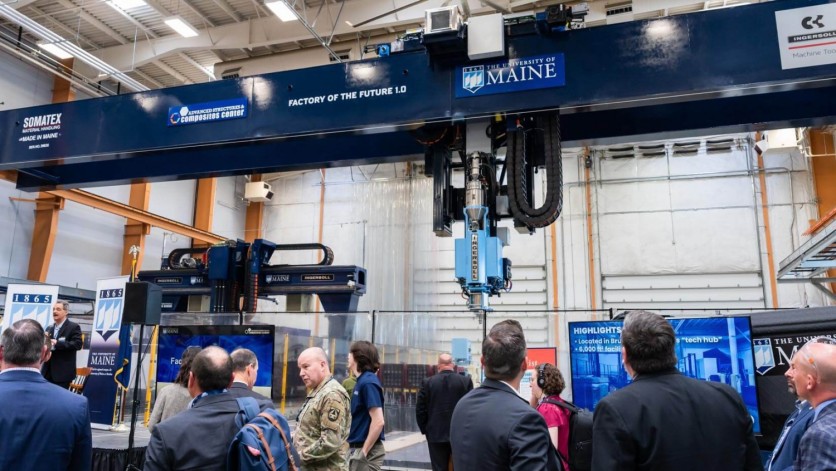The world's largest 3D printer has successfully constructed a house, showcasing its potential to streamline construction processes by reducing time and labor.
Meanwhile, an even larger printer was recently unveiled in Maine, suggesting the possibility of constructing entire neighborhoods.

The Factory of the Future (FoF 1.0)
The University of Maine (UMaine) recently unveiled a new 3D printer, known as the Factory of the Future 1.0 (FoF 1.0), at the Advanced Structures and Composites Center (ASCC).
This printer, surpassing its predecessor in size, aims to advance sustainable manufacturing across various industries.
FoF 1.0 can print objects as large as 96 feet long by 32 feet wide by 18 feet high, with a printing speed of up to 500 pounds per hour.
This printer utilizes thermoplastic polymer and offers promising opportunities for eco-friendly and cost-effective manufacturing. It could be used in industries such as national security, affordable housing, bridge construction, and maritime vessel fabrication.
Substantial support from the Office of the Secretary of Defense through the U.S. Army Corps of Engineers made the development and fabrication of FoF 1.0 possible.
It is designed not only as a large-scale printer but also as a versatile system capable of dynamically switching between various manufacturing processes, including additive manufacturing, subtractive manufacturing, continuous tape layup, and robotic arm operations.
New Research Frontiers
FoF 1.0's capabilities extend beyond traditional manufacturing processes, offering new research opportunities in collaborative robotics operations, sensor integration, high-performance computing, and artificial intelligence.
These advancements are expected to meet rigorous quality standards and drive innovation across multiple sectors.
"FoF 1.0 opens up new research frontiers to integrate these collaborative robotics operations at a very large scale with new sensors, high-performance computing and artificial intelligence to create born-certified systems that meet high quality standards," ASCC Executive Director Habib Dagher said in a press release statement.
The printer's potential extends to developing biobased feedstocks from Maine's abundant wood residuals. Initiatives such as BioHome3D aim to leverage this technology to create sustainable and affordable housing solutions while advancing lightweight structures and vessel technologies crucial for national security.
"Maine needs an estimated 80,000 additional homes by 2030, many specifically for households with incomes at or below the area median income.
This new technology allows UMaine-ASCC to scale up its research and production of its innovative biobased 3D printed home technology," said MaineHousing's Development Director Mark Wiesendanger.
"This effort creates another means of producing quality affordable housing, while further driving costs down, and using abundant wood residuals from Maine's sawmills."
Related Article : 'Chameleon Robots:' These Robots Can Change Colors and Mimic Their Surroundings Through 3D Printing

ⓒ 2025 TECHTIMES.com All rights reserved. Do not reproduce without permission.




